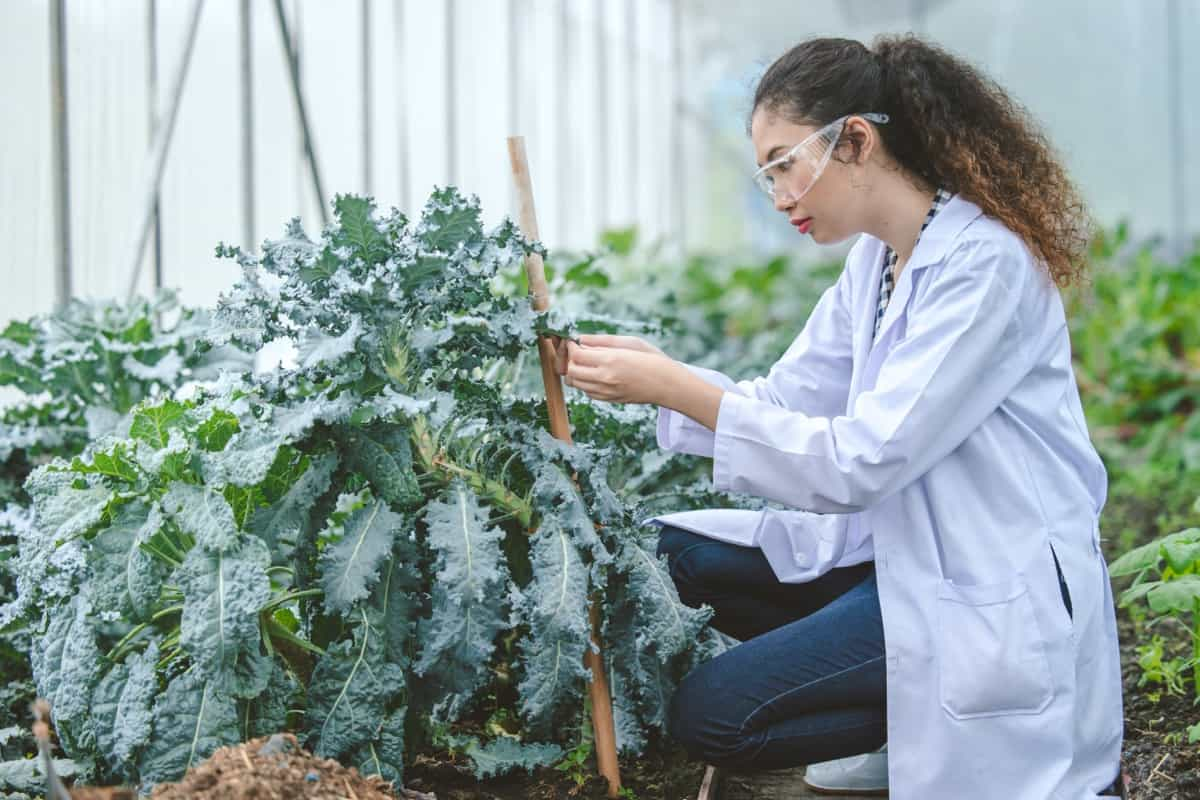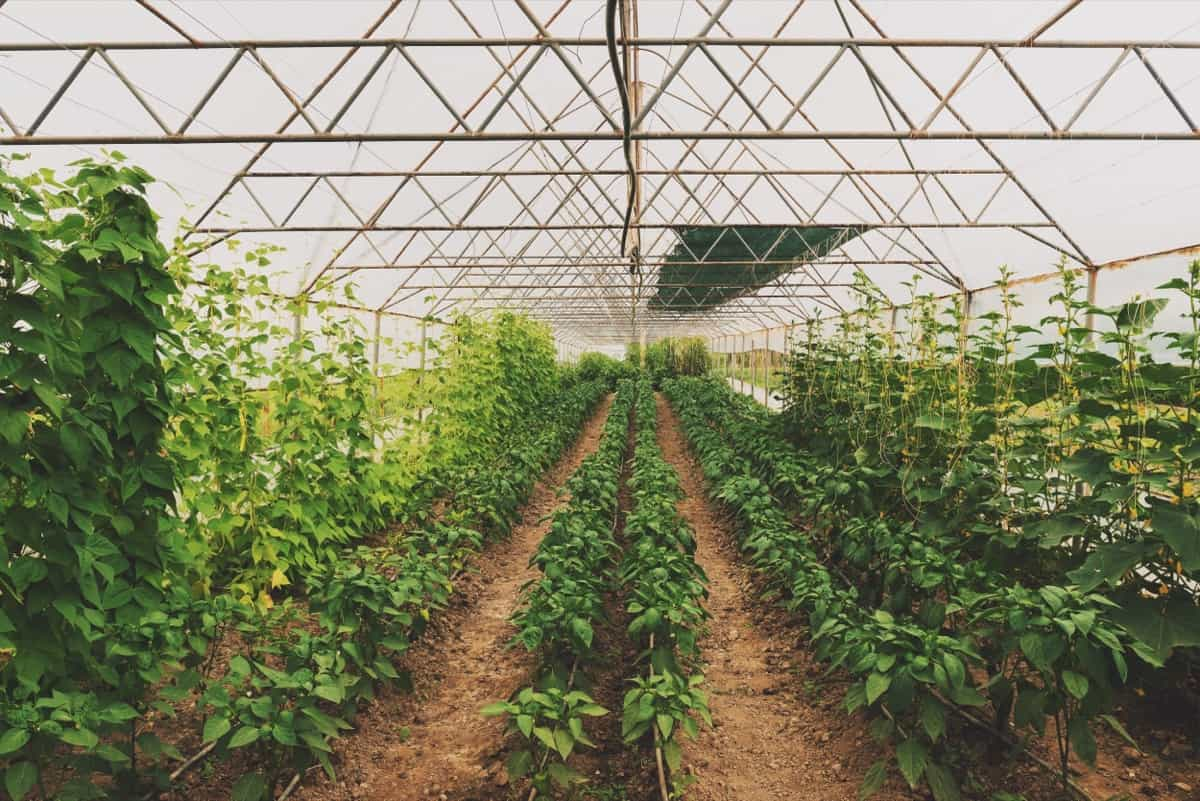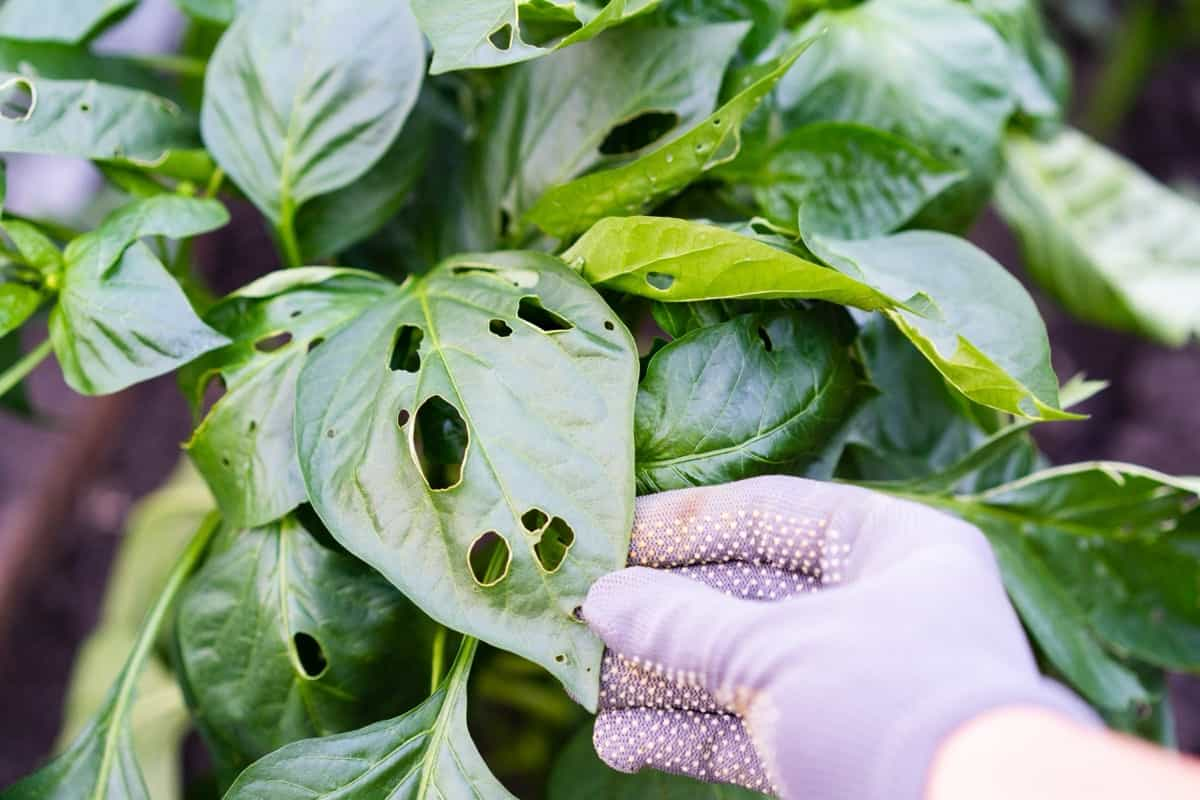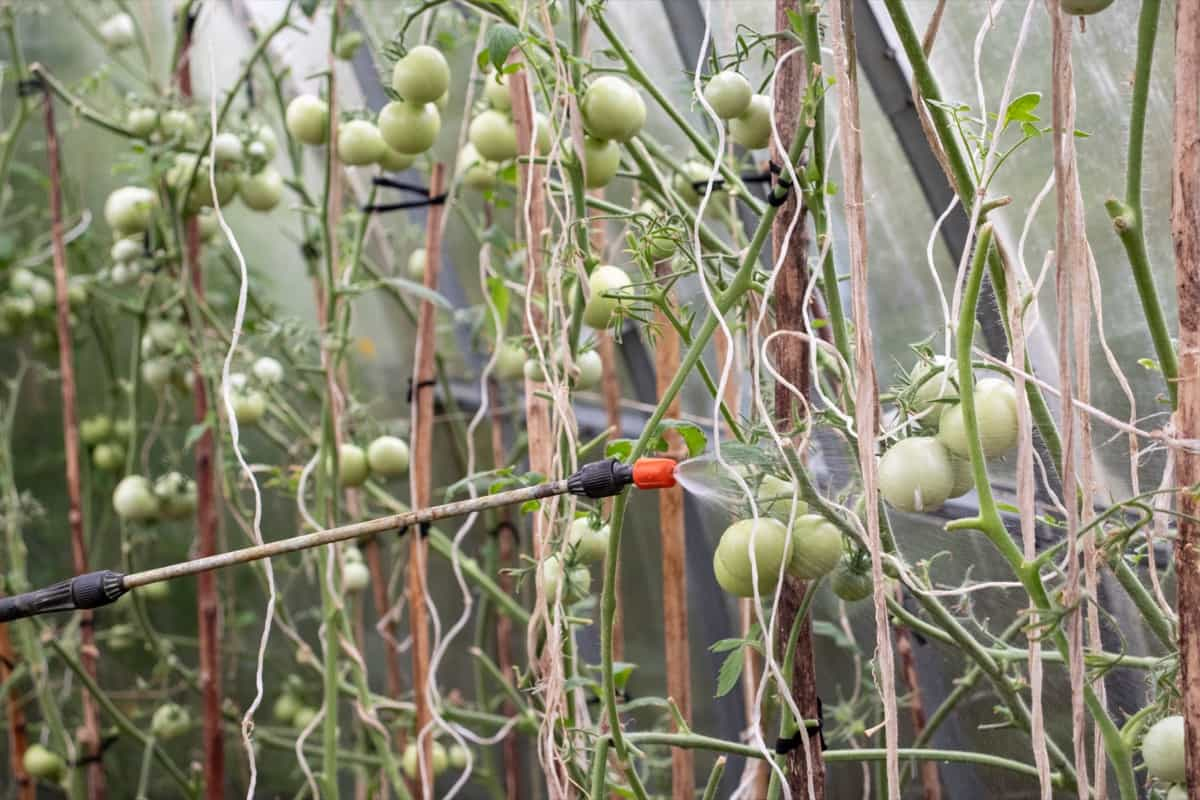Greenhouse pests are a constant threat to crop health and productivity. These organisms, ranging from insects to fungi, can devastate plants within the controlled environment of a greenhouse. To get rid of Greenhouse pests organically, natural control methods have gained significance in recent years. Employing these natural control methods enhances sustainability and safeguards the quality of greenhouse produce. This article discusses some organic and natural treatments to control Greenhouse pests naturally.

How to Control Greenhouse Pests Naturally
Importance of Integrated Pest Management (IPM) in Greenhouses: Integrated Pest Management For Greenhouse Pests
Integrated Pest Management (IPM) is pivotal in greenhouse agriculture, as it offers a holistic approach to pest control. By combining biological, physical, chemical, and cultural methods, IPM efficiently controls Greenhouse pests naturally while minimizing environmental impact and ensuring crop safety.
It optimizes resource utilization and reduces the risk of pesticide resistance. Furthermore, IPM encourages regular monitoring, allowing for timely pest detection and control. This comprehensive strategy promotes sustainable greenhouse farming, ensuring economic viability and environmental responsibility.
Identifying Common Greenhouse Pests and Their Damage
- Aphids: These tiny, pear-shaped insects are often green but can also be yellow, black, or brown. They suck plant sap, causing leaves to curl, turn yellow, and distort. Aphids excrete a sticky substance called honeydew, promoting the growth of sooty mold.
- Whiteflies: These small, moth-like insects have powdery white wings and congregate on the undersides of leaves. They feed on plant sap and secrete honeydew, leading to stunted growth, yellowing leaves, and reduced fruit quality.
- Fungus Gnats: These small, dark-colored flies lay their eggs in the soil. Larvae feed on plant roots, causing wilting, yellowing, and poor growth. Adults are nuisance pests that swarm around plants.
- Thrips: These slender, winged insects are usually brown or yellow. They scrape and suck plant tissues, leading to silvery or bronzed leaves, distorted growth, and reduced flower production.
- Caterpillars: These moths and butterfly larvae can devour leaves, flowers, and fruits. Their feeding leads to holes, chewed edges, and defoliation. Some caterpillars may also bore into stems or fruits.
- Slugs and Snails: These mollusks feed on various plants, leaving behind irregular holes and slimy trails. They are most active at night and during damp conditions.
- Shoreflies: Resembling small black flies, shoreflies lay eggs in damp soil. Their larvae feed on roots and decaying organic matter, potentially weakening plants with poor growth.
- Mites: These tiny arachnids can be red, green, or yellow. They pierce plant cells to feed, causing stippling, discoloration, and distorted growth. Spider mites also produce fine webbing.
In case you missed it: How to Control Houseplant Pests: How to Get Rid of Them with Natural and Organic Treatment

Beneficial Insects: Beneficial Insects For Greenhouse Pest Control
Beneficial insects like ladybugs, parasitic wasps, and predatory mites are invaluable allies in greenhouse pest management. They feed on common pests, reducing the need for chemical interventions. For instance, ladybugs consume aphids, while parasitic wasps lay their eggs in pest larvae. By introducing and supporting these natural predators, greenhouse growers can maintain a balanced ecosystem, control Greenhouse pests naturally, and enhance the overall health of their plants.
Companion Planting for Pest Control in Greenhouses
Companion planting involves strategically pairing plants to deter pests to control Greenhouse pests naturally. In greenhouses, aromatic herbs like basil and marigolds can repel common pests such as aphids and whiteflies. Meanwhile, plants like nasturtiums attract beneficial insects. This natural approach minimizes the need for chemical pesticides, fosters biodiversity, and promotes healthier greenhouse environments.
Using Biological Controls to Manage Greenhouse Pests
Biological controls harness nature’s mechanisms to control Greenhouse pests naturally. This includes introducing natural predators, like ladybugs or nematodes, and beneficial microorganisms, such as Bacillus thuringiensis. By relying on these living organisms, greenhouse growers can achieve effective pest control while minimizing the ecological impact of chemical treatments. Biological controls are sustainable, target-specific, and can be integrated into a comprehensive pest management strategy.
Cultural Practices for Natural Pest Control in Greenhouses
Crop rotation, sanitation, and careful spacing of plants can disrupt pest life cycles and reduce infestations. Choosing pest-resistant plant varieties and maintaining proper humidity and temperature levels also promote healthier, pest-resistant crops. Additionally, using reflective mulches and optimizing light conditions can deter certain pests. These eco-friendly cultural practices enhance the overall resilience of greenhouse ecosystems, reducing the need for chemical interventions by controlling Greenhouse pests naturally.
Homemade Organic Sprays for Greenhouse Pest Control: Homemade Organic Sprays For Greenhouse Pest Control
Homemade organic sprays provide an eco-friendly alternative to chemical pesticides. Solutions made from ingredients like neem oil, garlic, and soap can effectively control pests in the greenhouse. Neem oil disrupts the feeding and growth of various insects, while garlic-based sprays act as natural repellents. Soap-based solutions help suffocate soft-bodied pests. Homemade organic sprays are safe and economical and minimize harm to beneficial insects like pollinators and the environment by controlling Greenhouse pests naturally.
Physical Barriers and Traps for Greenhouse Pest Prevention: Physical Traps For Greenhouse Pests
Physical barriers and traps act as a first line of defense against greenhouse pests to control Greenhouse pests naturally. Installing fine mesh screens on vents and openings prevents pest entry while allowing for adequate ventilation. Sticky traps attract and capture flying insects, like whiteflies and fungus gnats. Pheromone traps lure pests away from crops. These non-toxic methods help reduce pest populations and keep greenhouse environments pest-free.
In case you missed it: How to Control Sweet Potato Pests Naturally: How to Get Rid of Them with Natural and Organic Treatment

Maintaining a Clean Greenhouse Environment to Prevent Pests
- Sanitation: To get rid of Greenhouse pests naturally, regularly remove fallen leaves, decaying plant material, and weeds. Clean up any debris in and around the greenhouse, as it can serve as a breeding ground for pests.
- Quarantine: Isolate new plants or those returning from outdoors for a quarantine period to check for signs of pests before introducing them to the greenhouse.
- Disinfection: Clean and disinfect all greenhouse surfaces, tools, and equipment to prevent the buildup of harmful microorganisms and pests. Pay close attention to benches, pots, and containers.
- Proper Water Management: Avoid overwatering, as excess moisture can create conditions favorable to fungus gnats and other pests. Use well-draining soil and watering techniques to maintain optimal moisture levels.
- Weed Control: Regularly remove weeds inside and outside the greenhouse, as they can harbor pests and provide a gateway for them to enter.
- Ventilation: Ensure proper airflow and ventilation to discourage the buildup of stagnant, humid conditions that many pests thrive in.
- Inspection: Regularly inspect plants for signs of pests, such as discoloration, wilting, or chewed leaves. Early detection allows for timely intervention.
- Biological Controls: Introduce beneficial insects like ladybugs or parasitic wasps, which can help maintain a balanced ecosystem and reduce pest populations.
Table For How To Control Greenhouse Pests Naturally
| Pest | Natural Control Methods |
| Aphids | Release ladybugs into the greenhouse. They feed on aphids. Use neem oil sprays to disrupt aphid feeding and reproduction. Apply insecticidal soap to suffocate aphids. |
| Whiteflies | Hang yellow sticky traps to attract and capture whiteflies. Introduce predatory insects like Encarsia formosa and Eretmocerus eremicus. Neem oil can deter and disrupt whitefly infestations. |
| Fungus Gnats | Place yellow sticky traps at soil level to capture adult fungus gnats. Use beneficial nematodes like Steinernema feltiae to target larvae in the soil. |
| Thrips | Release predatory mites like Amblyseius cucumeris. Neem oil can help control thrips on contact. |
| Caterpillars | Physically remove caterpillars from plants. Use BT-based products to target caterpillars. |
| Slugs and Snails | Place copper tape or barriers to deter slugs and snails. Set up shallow dishes of beer to attract and drown slugs. Sprinkle diatomaceous earth around plant bases. |
| Shore flies | Use yellow sticky traps to capture adult shoreflies. Introduce predatory insects like Rove beetles. |
| Mites | Release predatory mites like Phytoseiulus persimilis for spider mite control. Apply horticultural oils to suffocate mites. Isolate infested plants to prevent mite spread. |
In case you missed it: How to Control Broccoli Pests Naturally: How to Get Rid of Them with Natural and Organic Treatment

Conclusion
Remember that prevention is key in greenhouse pest control. Regularly monitor the plants for signs of infestation, maintain good hygiene, and avoid overwatering, which can create favorable conditions for some pests. Additionally, rotating crops and maintaining a diverse plant selection can help reduce pest problems in your greenhouse.
- Natural Solutions for Pest Control in Flower Gardens
- Types of Fungicides Used in Agriculture
- Common Issues in the Fruit Development Stage of Pomegranate Farming
- Fruit Development Issues in Papaya: Easy Solutions and Treatment
- Soil-Borne Diseases and How to Protect Your Plants
- Practices to Prevent Disease Spread in the Garden
- From Wilted to Thriving: How to Treat Root Rot Naturally in Houseplants
- Natural Remedies to Cure Brown Spots on Fig Tree Leaves
- Natural Solutions for Poinsettia Problems: 100% Effective Remedies